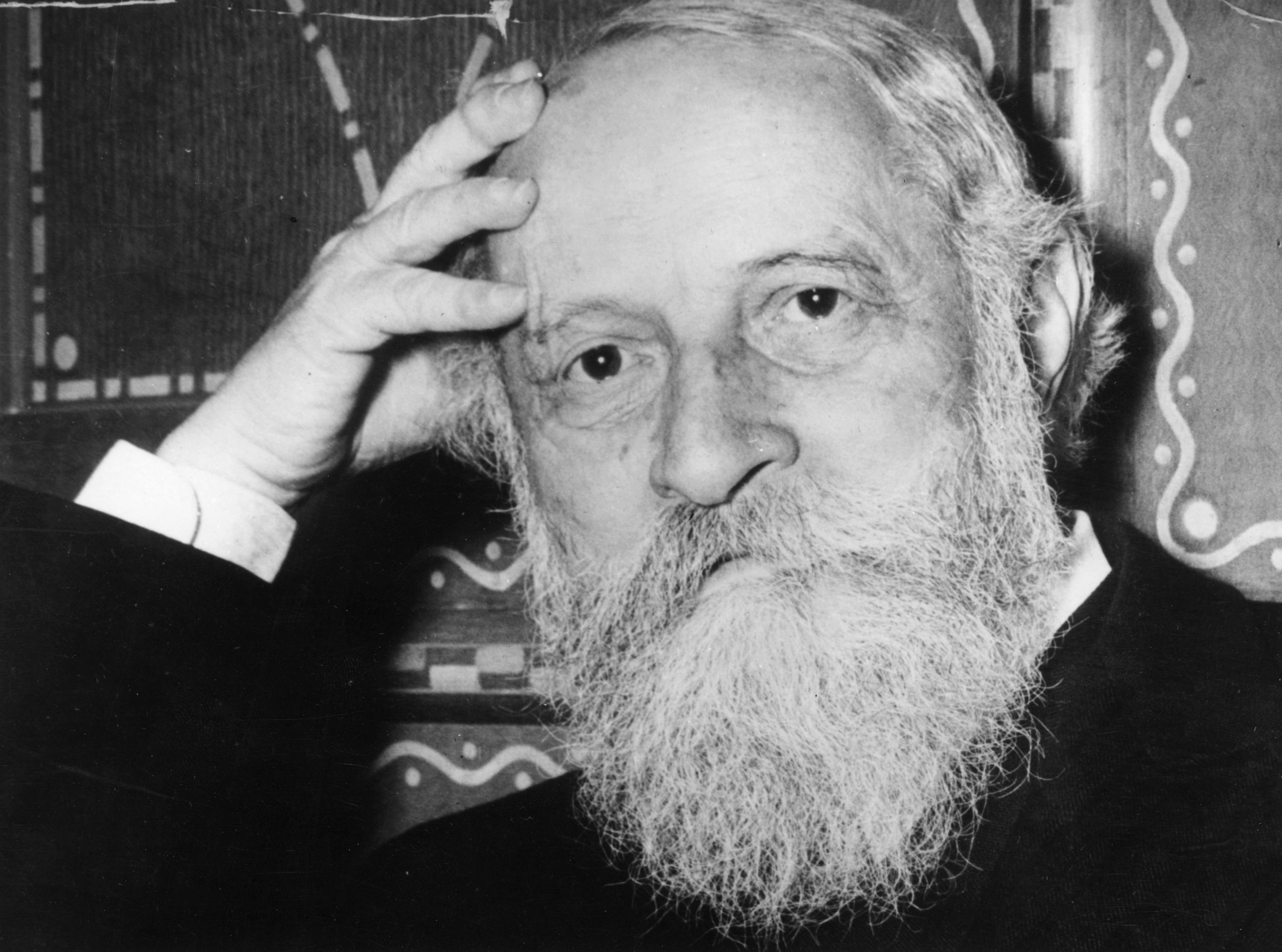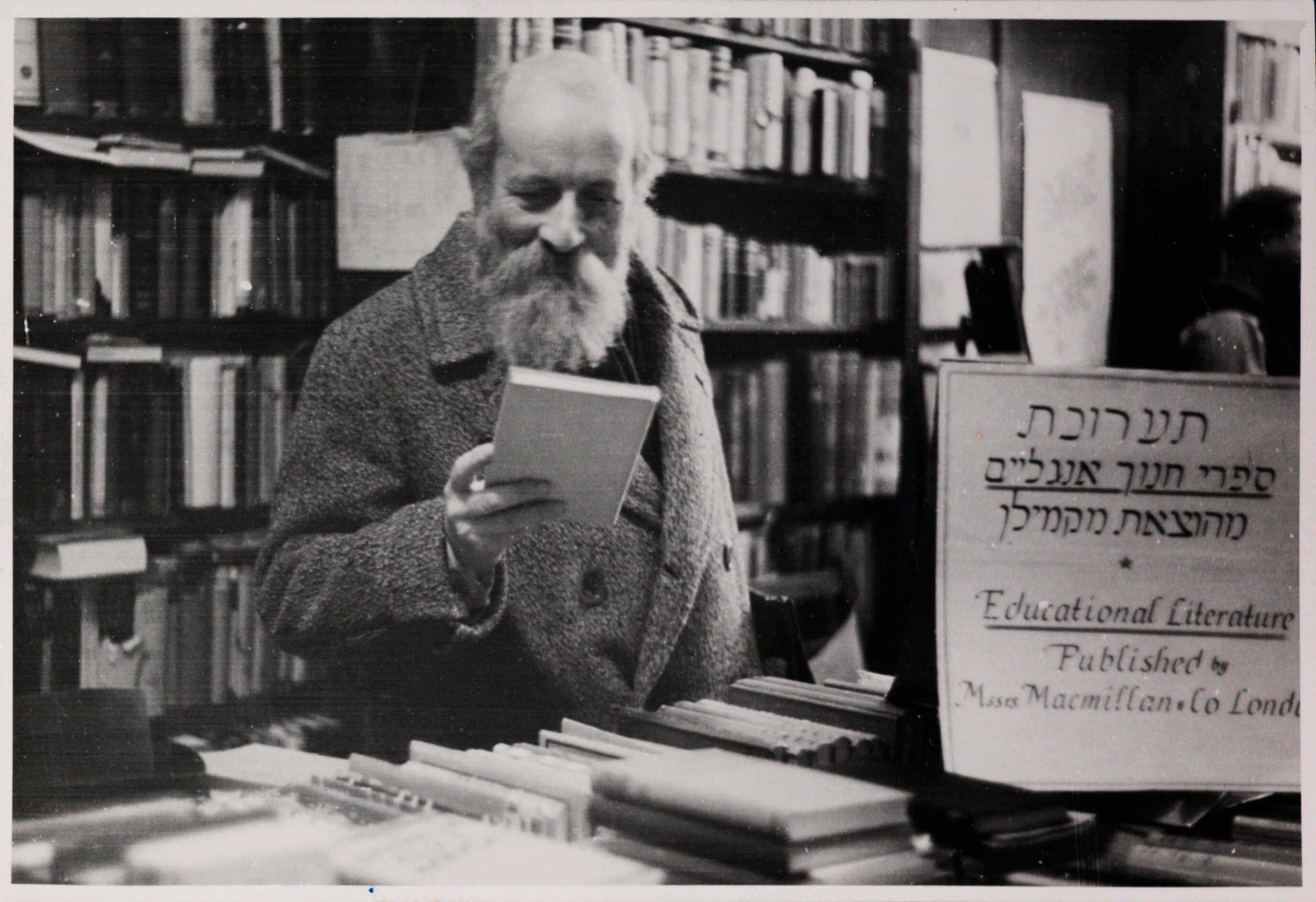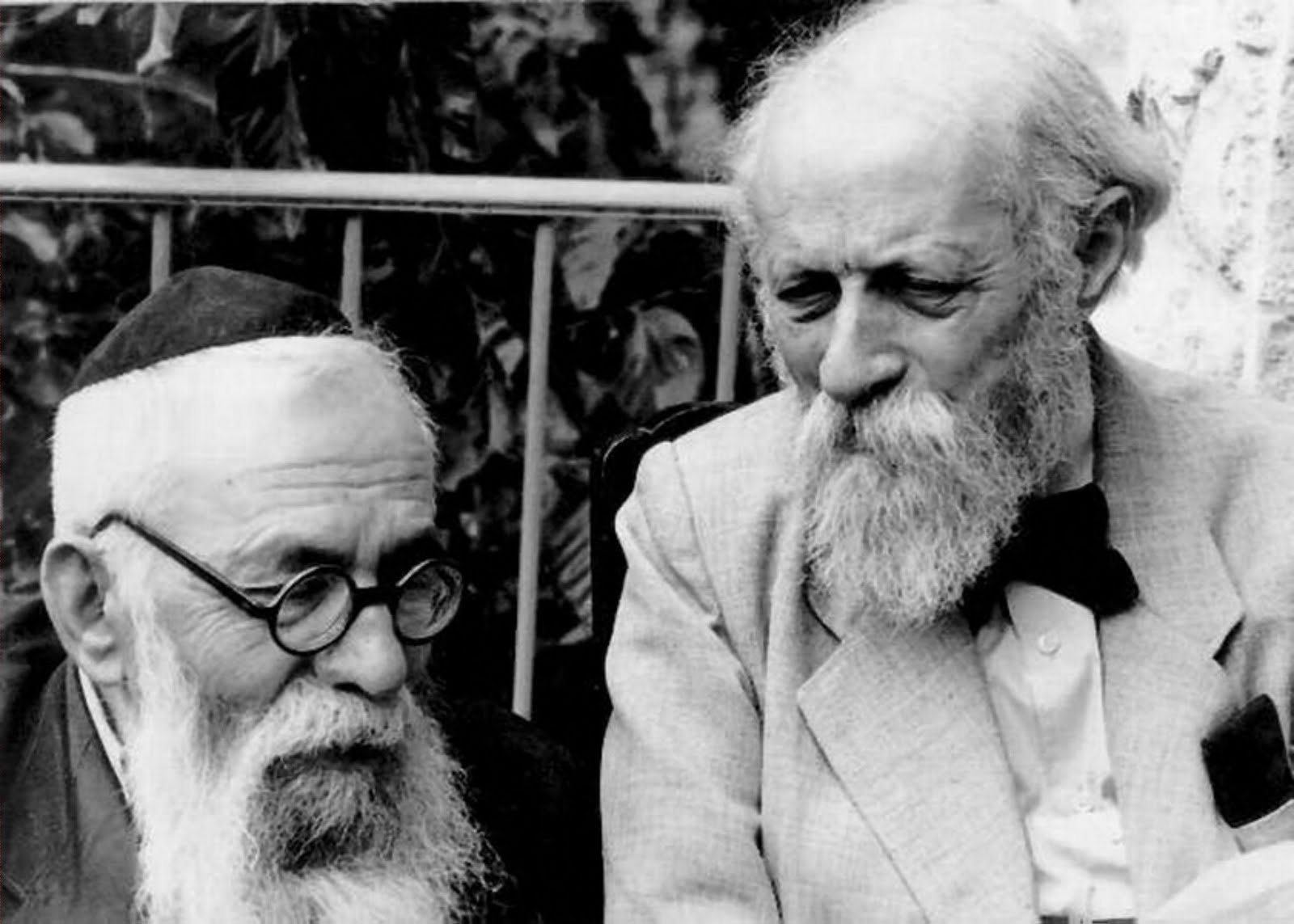Martin Buber, (born February 8, 1878, Vienna—died June 13, 1965, Jerusalem), German-Jewish religious philosopher, biblical translator and interpreter, and master of German prose style. Buber’s philosophy was centred on the encounter, or dialogue, of man with other beings, particularly exemplified in the relation with other men but ultimately resting on and pointing to the relation with God. This thought reached its fullest dialogical expression in Ich und Du (1923; I and Thou).
From Vienna To Jerusalem
Buber was the son of Carl Buber, an agronomist, and his wife—both assimilated Jews. When Martin was three his mother left his father, and the boy was brought up by his grandparents in Lemberg (now Lviv, Ukraine). The search after the lost mother became a strong motive for his dialogical thinking—his I–Thou philosophy.
Solomon Buber (1827–1906), the Lemberg grandfather, a wealthy philanthropist, dedicated his life to the critical edition of Midrashim, a part of the nonlegal rabbinic lore. His works show him as a Hebrew gentleman-scholar who was also interested in Greek linguistic parallels. His wife, Adele, was even more a product of the 19th-century Enlightenment movement among eastern European Jewry that sought to modernize Jewish culture. Though strongly influenced by both his grandparents and taught Hebrew by Solomon, young Martin was drawn more to Schiller’s poems than to the Talmud. His inclination toward general culture was strengthened by his grammar-school education, which provided him with an excellent grounding in the classics. During his adolescence his active participation in Jewish religious observances ceased altogether.

In his university days—he attended the universities of Vienna, Berlin, Leipzig, and Zürich—Buber studied philosophy and art. His doctoral dissertation (Vienna, 1904) dealt with the theories of individuation in the thought of two great mystics, Nicholas of Cusa and Jakob Böhme, but it was Friedrich Nietzsche’s proclamation of heroic nihilism and his criticism of modern culture that exerted the greatest influence on Buber at that time. The Nietzschean influence was reflected in Buber’s turn to Zionism and its call for a return to roots and a more wholesome culture.
On the invitation of the Zionist leader Theodor Herzl, in 1901 he became editor of the Zionist weekly Die Welt (“The World”). But soon a significant difference of opinion developed between the two men. Buber favoured an overall spiritual renewal and, at its core, immediate agricultural settlements in Palestine, as against Herzl’s emphasis on diplomacy to bring about the establishment of a Jewish homeland secured by public law. Consequently, Buber resigned his post the same year he assumed it; he remained a Zionist but generally stood in opposition to official party policies and later to official state policies of Israel. He was among the early protagonists of a Hebrew university in Jerusalem.
In 1916 Buber founded the influential monthly Der Jude (“The Jew”), which he edited until 1924 and which became the central forum for practically all German-reading Jewish intellectuals. In its pages he advocated the unpopular cause of Jewish-Arab cooperation in the formation of a binational state in Palestine.
After his marriage (1901) to a non-Jewish, pro-Zionist author, Paula Winckler, who converted to Judaism, Buber took up the study of Ḥasidism. His Chassidischen Bücher (1927) made the legacy of this popular 18th-century eastern European Jewish pietistic movement a part of Western literature. In Ḥasidism Buber saw a healing power for the malaise of Judaism and mankind in an age of alienation that had shaken three vital human relationships: those between man and God, man and man, and man and nature. They can be restored, he asserted, only by man’s again meeting the other person or being who stands over against him, on all three levels—the divine, human, and natural. Buber maintained that early Ḥasidism accomplished this encounter and that Zionism should follow its example.

In Paths in Utopia (1949) he referred to the Israeli kibbutz—a cooperative agricultural community the members of which work in a natural environment and live together in a voluntary communion—as a “bold Jewish undertaking” that proved to be “an exemplary non-failure,” one example of a “utopian” socialism that works. Yet he did not ascribe ultimate success to it. His reservation stemmed from the fact that, generally, members of the kibbutz disregarded the relation between man and God, denying or doubting the existence or presence of a divine counterpart. In the interpersonal area they fulfilled God’s commandment to build a just community while yet denying the divine origin of the implicit imperative. Buber as an educator tried to refute these ideological “prejudices of youth,” who, he asserted, rightly criticize outworn images of God but wrongly identify them with the imageless living God himself.
Buber’s pedagogical work reached a climax under the new conditions created by the Nazi assumption of power. In November 1933 he became head of the newly reopened Freies Jüdisches Lehrhaus for Jewish adult education in Frankfurt am Main. In 1934 he became director of the whole organization of Jewish adult education and retraining of Jewish teachers in Nazi Germany, where Jewish teachers and students were being progressively excluded from the educational system. He was a courageous spokesman of spiritual resistance. As against the Nazi nationalism of “blood and soil,” he stressed that, while the Jew must maintain his authentic Jewish existence, the educational aim could not be racist (Völkisch). His old slogan “to be human in a Jewish way” was now completed by the demand to be Jewish in a humane way.
After the Nazi secret police forbade his public lectures and then all of his teaching activities, he emigrated as a man of 60 to Palestine. He activated his Hebrew and soon took part in the social and intellectual life of the Palestinian Jewish community. He was appointed to a professorship in social philosophy at Hebrew University in Jerusalem, a post he held until 1951. He was the first president of the Israeli Academy of Sciences and Arts. After the establishment of the State of Israel and with the beginning of mass immigration from the Islāmic countries, Buber initiated the founding of the Teachers Training College for Adult Education in Jerusalem and became its head (1949). This college trained what were probably the best educators for the immigrants from the Middle East and North Africa, many of them having been chosen from among the immigrants.
As a teacher of adults, Buber enjoyed the cooperation of his political adversaries and sometimes also of his religious adversaries. Though he denied the obligatory character of Jewish religious Law and emphasized a nonlegalistic prophetic type of religion, some of the Orthodox also worked with him. Buber’s endeavours in adult education were based on his insight that adults again become educable when crisis threatens their spurious security.
From Mysticism To Dialogue.
Buber’s manifold activities were inspired by his philosophy of encounter—of man’s meeting with other beings. An early mystical period culminated in Daniel (1913), five dialogues on orientation and realization, man’s two basic stances toward the world. Orientation takes the world as a static state of affairs governed by comprehensible laws. It is a receptive, analytical, or systematizing attitude. Realization, on the other hand, is a creative, participative attitude that realizes the possibilities in things, experiencing through one’s own full reality the full reality of the world. It operates within an open horizon of possibilities.
The Reden über das Judentum (1923; “Talks on Judaism”) mark another step in his development. The early “Talks” were delivered in 1909–11 before large Zionist student audiences in Prague; each of the speeches tries to answer its opening question: “Jews, why do we call ourselves Jews?” To half-assimilated Zionists in search of a rationale for their Jewish existence, Buber offered his theories regarding the essence of Judaism, basing his quest for it on his listeners’ assumed identity as Jews. In some of the “Talks,” as well as in Daniel, the mystic element still prevails, but Buber later abandoned the notion of a mystical union between man and God and embraced instead the notion of their encounter, which presupposes and preserves their separate existence.
This basic view underlies Buber’s mature thinking; it was expressed with great philosophic and poetic power in his famous work Ich und Du (1923; I and Thou). According to this view, God, the great Thou, enables human I–Thou relations between man and other beings. Their measure of mutuality is related to the levels of being: it is almost nil on the inorganic and botanic levels, rare on the animal level, but always possible and sometimes actual between human beings. A true relationship with God, as experienced from the human side, must be an I–Thou relationship, in which God is truly met and addressed, not merely thought of and expressed.

Between man and man, the I–Thou relationship into which both parties enter in the fullness of their being—as in a great love at its highest moment or in an ideal friendship—is an exception. Generally, we enter into relationships not with the fullness of our being but only with some fraction of it. This is the I–It relationship, as in scholarly pursuits in which other beings are reduced to mere objects of thought or in social relations (e.g., boss and worker) wherein persons are treated largely as tools or conveniences. This form of relationship enables the creation of pure and applied science as well as the manipulation of man by man. Buber’s ethical concept of the demarcation line—to be drawn anew every day between the maximum of good that can be done in a concrete situation and the minimum of evil that must be done in it—calls for an I–Thou relation whenever possible and settles for an I–It relation whenever necessary—e.g., for the purpose of human survival.
Toward God, any type of I–It relationship should be avoided, be it theoretical by making him an object of dogmas, juridical by turning him into a legislator of fixed rules or prayers, or organizational by confining him to churches, mosques, or synagogues. Buber’s so-called religious anarchism—his rejection of any fixed rules of behaviour in the relation between man and God—opened to him new insights in his works on the Bible but also served as a block to an objective evaluation of biblical, let alone Talmudic, Law. He saw the Bible as originating in the ever-renewed encounter between God and his people, followed by a tradition that authentically reflected this experience and another that distorted it to serve later ideological aims. He ascribed most of the legal prescriptions of the Talmud to what he called the spurious tradition removed from the Thou relation with God. This interpretation has been criticized as one-sided and subjective; Buber mitigated it somewhat in his later years.
After the religious philosopher Franz Rosenzweig, Buber’s friend and fellow translator of the Bible, read Ich und Du, he remarked: “Buber gives more recognition to the ‘Thou’ than anybody before him, but he wrongs the ‘It’.” To this Buber replied, many years later, that had he lived in a time when the Thou was flowering, he would have “sounded the praises of the It,” but that in his time, when the Thou was withering, he had to do the reverse. This argument between Buber and his closest and greatest friend indicates his attitude toward normative Judaism. While Rosenzweig tried to live it as much as possible and became more and more a practicing Jew, Buber stood his ground as one who embodied his Judaism in no prescribed, special manner. This stance, in addition to his political views (i.e., his opposition to Zionist policy toward the Arabs), set him apart from his own people. It made him, however, their main spokesman in the Jewish–Christian dialogue. In his Zwei Glaubensweisen (1950) he construed two religious types according to their approach to God: one called by the Hebrew term for trust, emuna, spelling mutual confidence between God and man (I and Thou), and the other called by the Greek term for faith, pistis, spelling the belief in the factuality of crucial events in salvation history—e.g., Paul’s statements about Jesus’ life, death, and Resurrection. Judaism for Buber was the classical example of emuna and Christianity of pistis, although there was a good deal of pistis in historical Judaism and a good deal of emuna in historical Christianity. His Christian opponents on this and other matters still found a common ground with Buber, because he agreed to a dialogically open, if not dogmatically defined, universe of discourse in which they could talk fruitfully with one another.
The Final Years.
In his last years a group of kibbutz members turned to him with their personal and communal problems. Siḥot loḥamin (1967; The Seventh Day, 1970), published by them shortly after the Six-Day War, testifies to Buber’s living spirit by its self-searching attitude on ethical questions of war and peace and on Arab–Jewish relations.
An unprecedented event occurred at Buber’s funeral in Jerusalem, a high state function: a delegation of the Arab Students’ Organization placed a wreath on the grave of one who strove mightily for peace between Israel’s and Palestine’s two peoples.

























